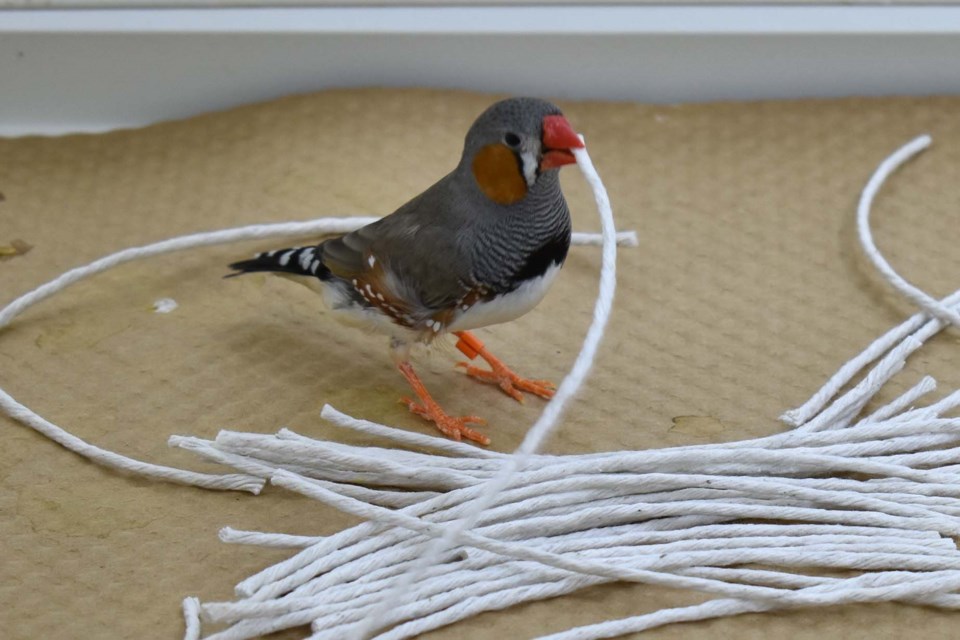University of Alberta researchers have used robbery and bits of string to discover that birds really do learn from experience when it comes to nest construction.
U of A PhD student Andrés Camacho-Alpízar and his team published a study in Behavioural Processes last January with the lighthearted title of, “If it ain’t broke, don’t fix it: Breeding success affects nest-building decisions.”
While researchers have long known that birds learn from experience (as seen in the tool-making and face-recognizing abilities of crows, for example), there’s relatively little known about how they know to build nests, Camacho-Alpízar said. Most assumed birds knew what to build based on instinct.
Camacho-Alpízar said he wanted to see if experience, specifically reproductive success, would affect nest construction.
He and his team mustered 27 mated pairs of zebra finches (chosen because they were one of the few birds that made nests in captivity) and had them make nests from coconut fibre. They then simulated nest failure by stealing the eggs from half of the nests. The birds then mated and nested again, this time with the choices of two materials: the familiar coconut and novel bits of white string.
The team found that the birds who did not have their nest robbed the first time were more likely to stick with coconut for their second nest, suggesting the birds knew to use what worked. To their surprise, the birds who were robbed did not ignore the coconut fibre the second time around, despite the fact that it had apparently failed them. Instead, they used roughly equal amounts of coconut and string.
“This shows that birds adapt nest-building behaviour based on trial and error,” Camacho-Alpízar explained – if you got it right the first time, you stick with what worked; if you didn’t, you experiment.
Researchers are still working to figure out how birds know how to build nests in the first place, Camacho-Alpízar said. A study on zebra finches published last year by the U of A suggests the appearance of one’s birth nest was not a major influence, but growing up with access to certain nest material was, but only if a bird also grew up alongside an adult.
Camacho-Alpízar said this study could help with conservation efforts. If an endangered species was at risk due to nest parasites, for example, researchers could try and teach them to use anti-parasitic materials (such as how house finches use cigarette butts) in their nests.
The study is available at bit.ly/3aVgDZi.




